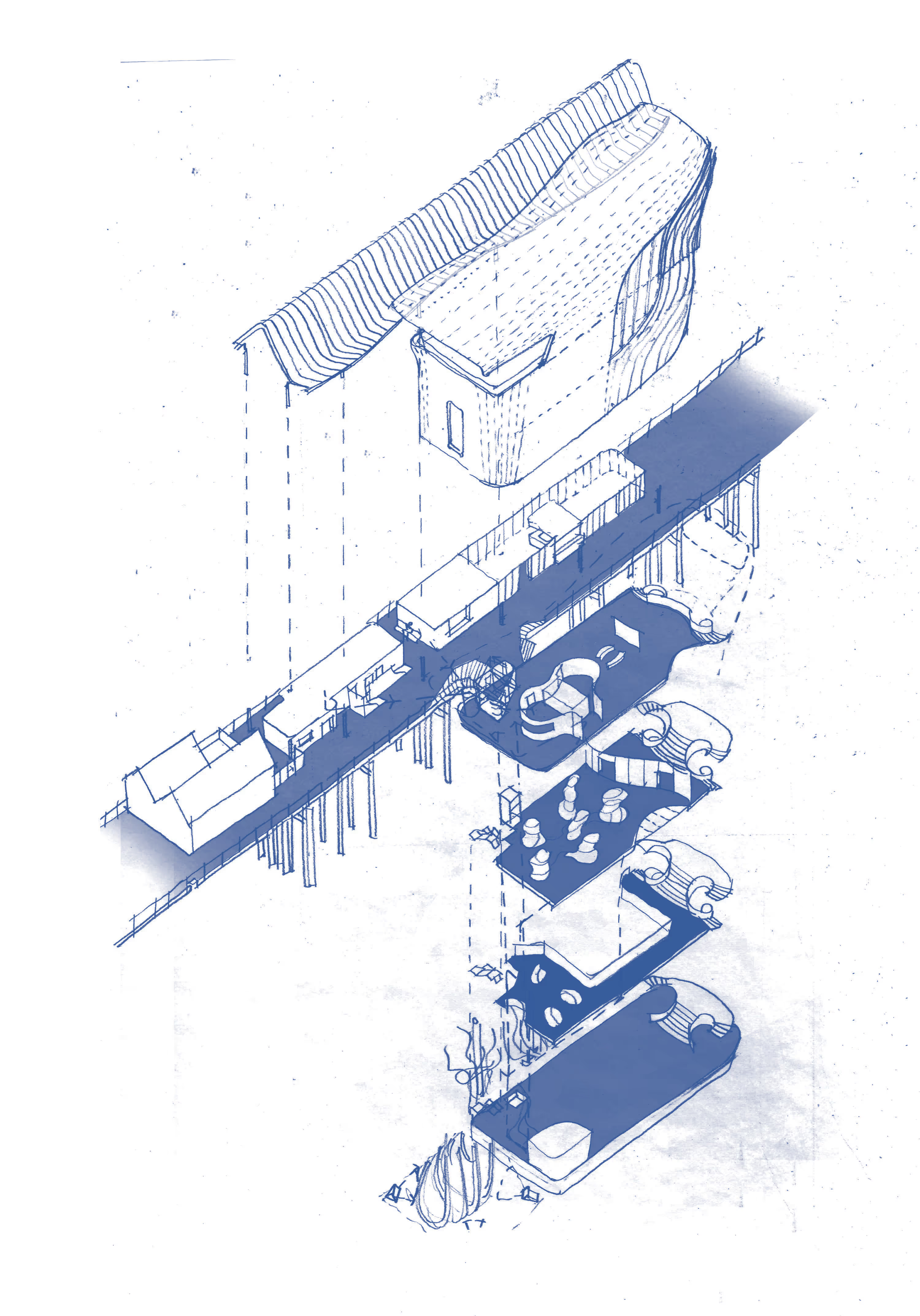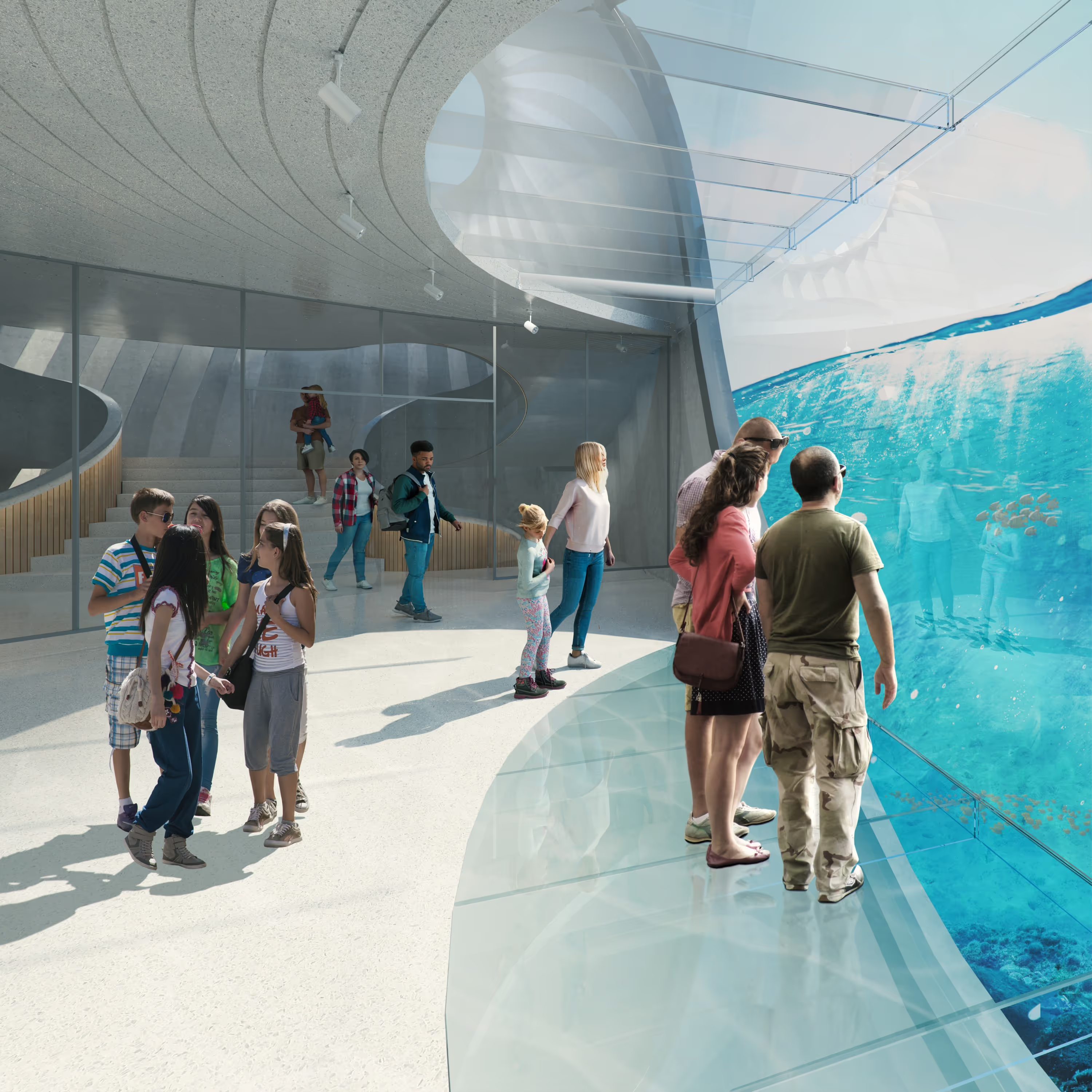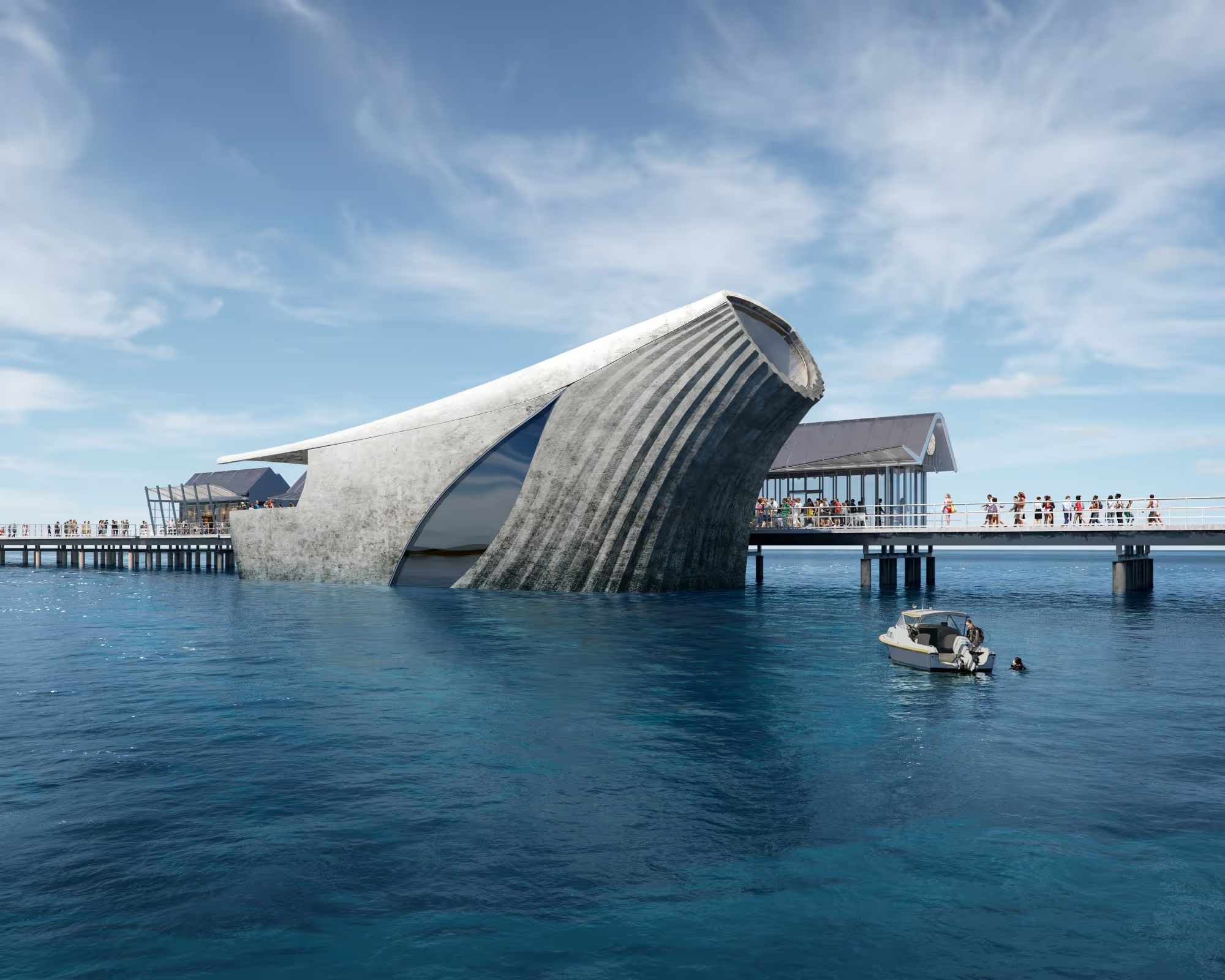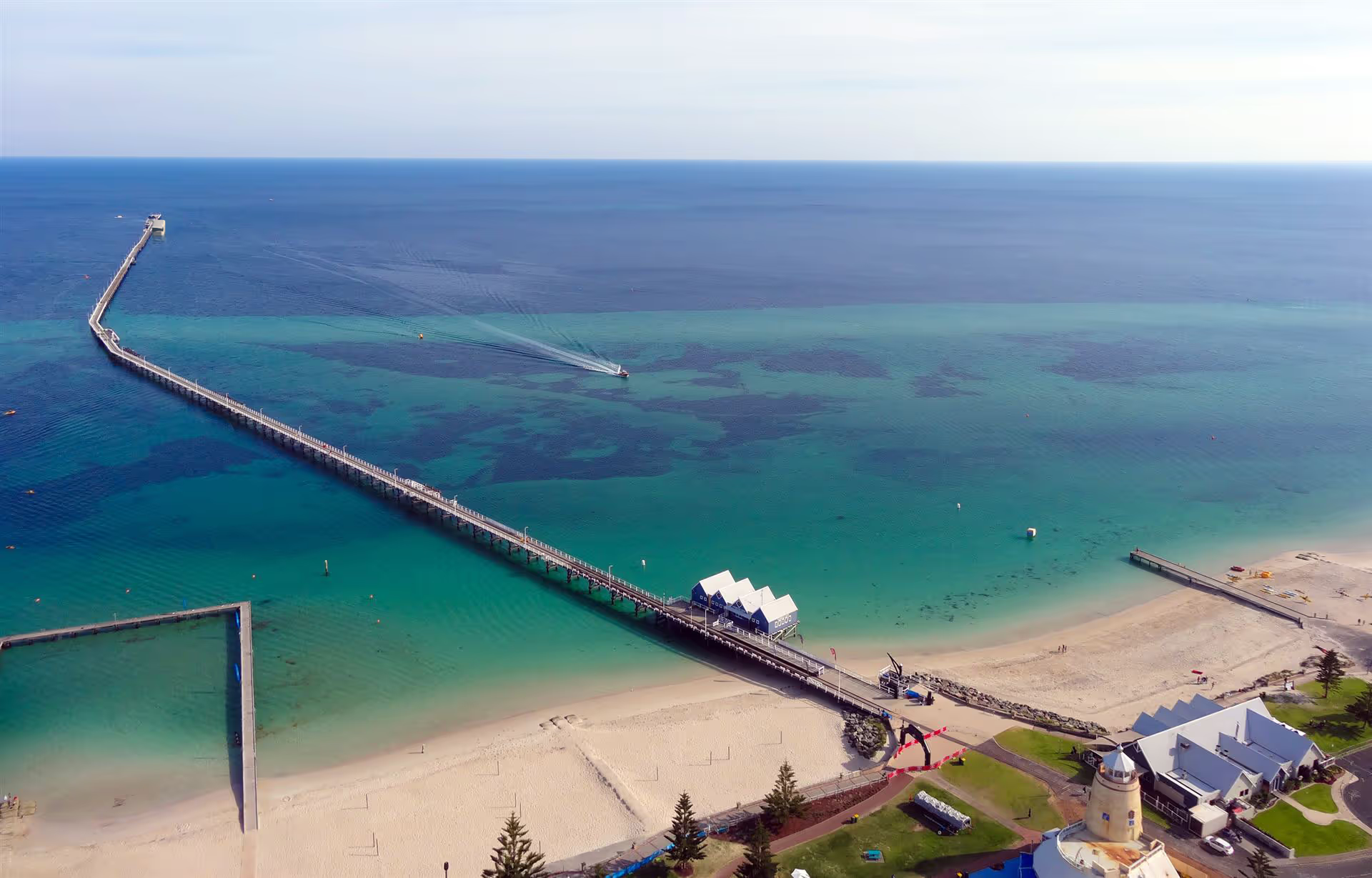

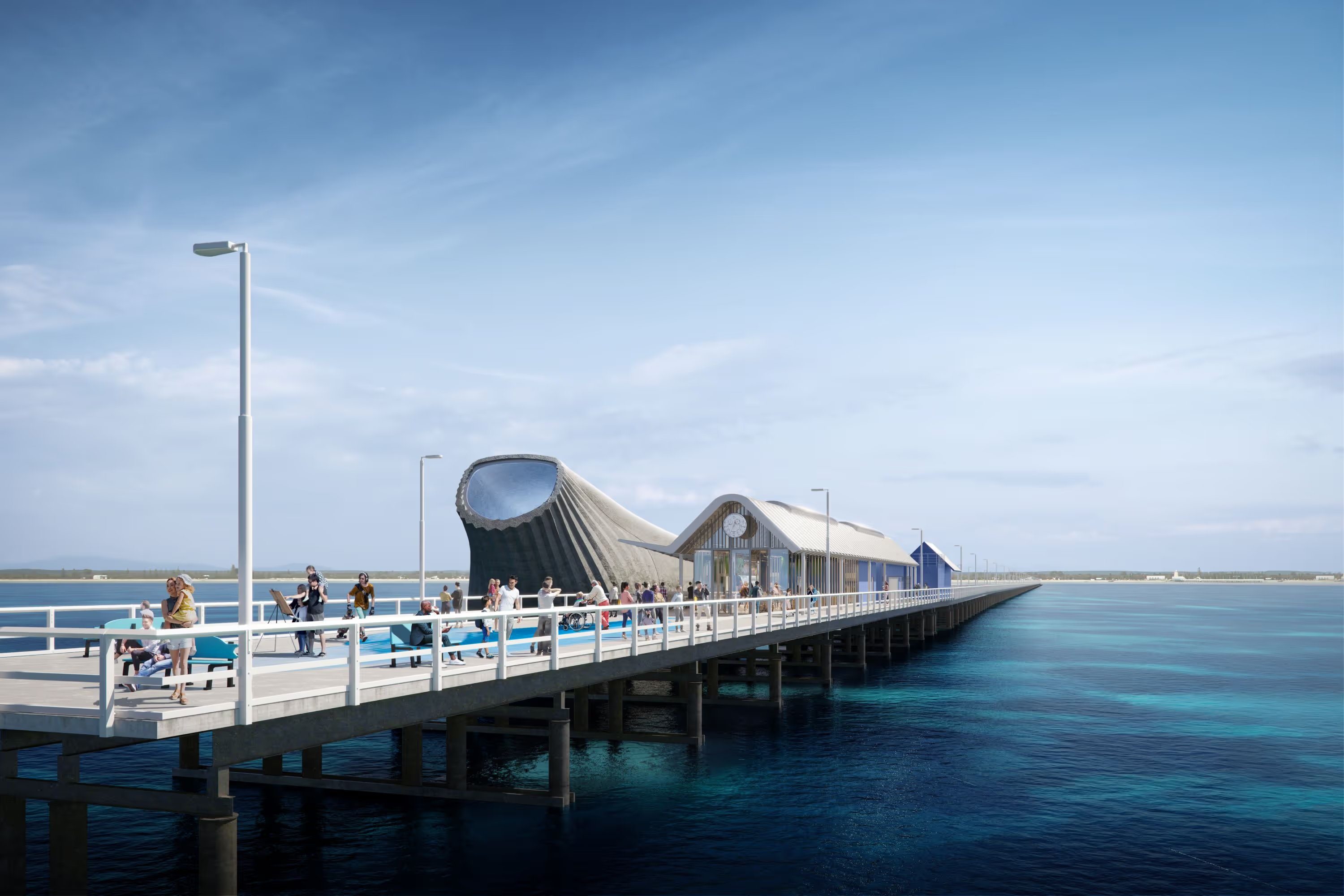
Location: Busselton Jetty, WA, Australia
Client: Subcon
Scale: 900 sqm
Cost: $AU30 million
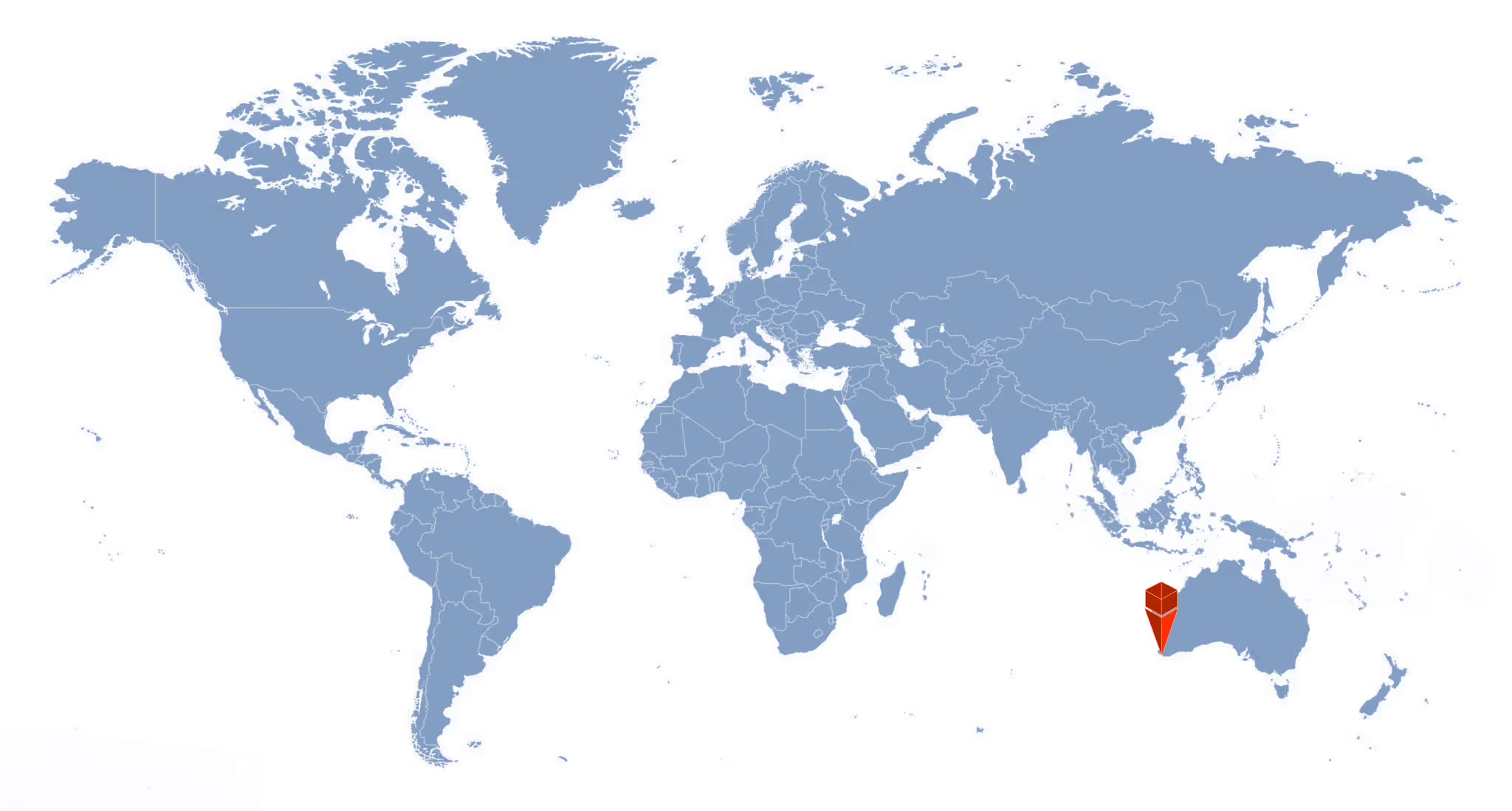



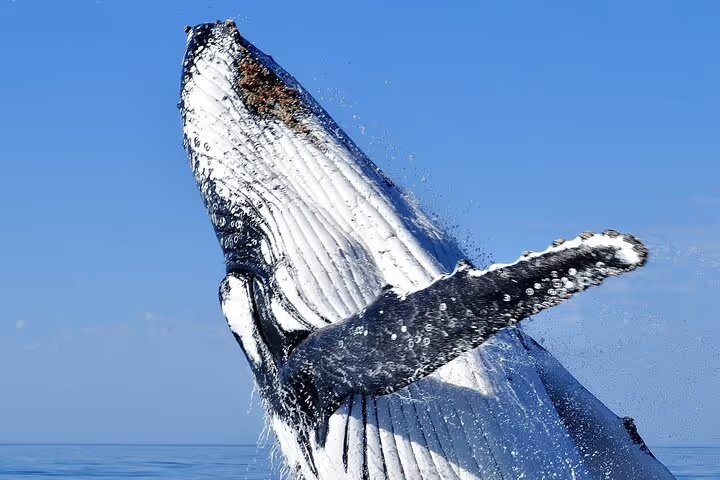
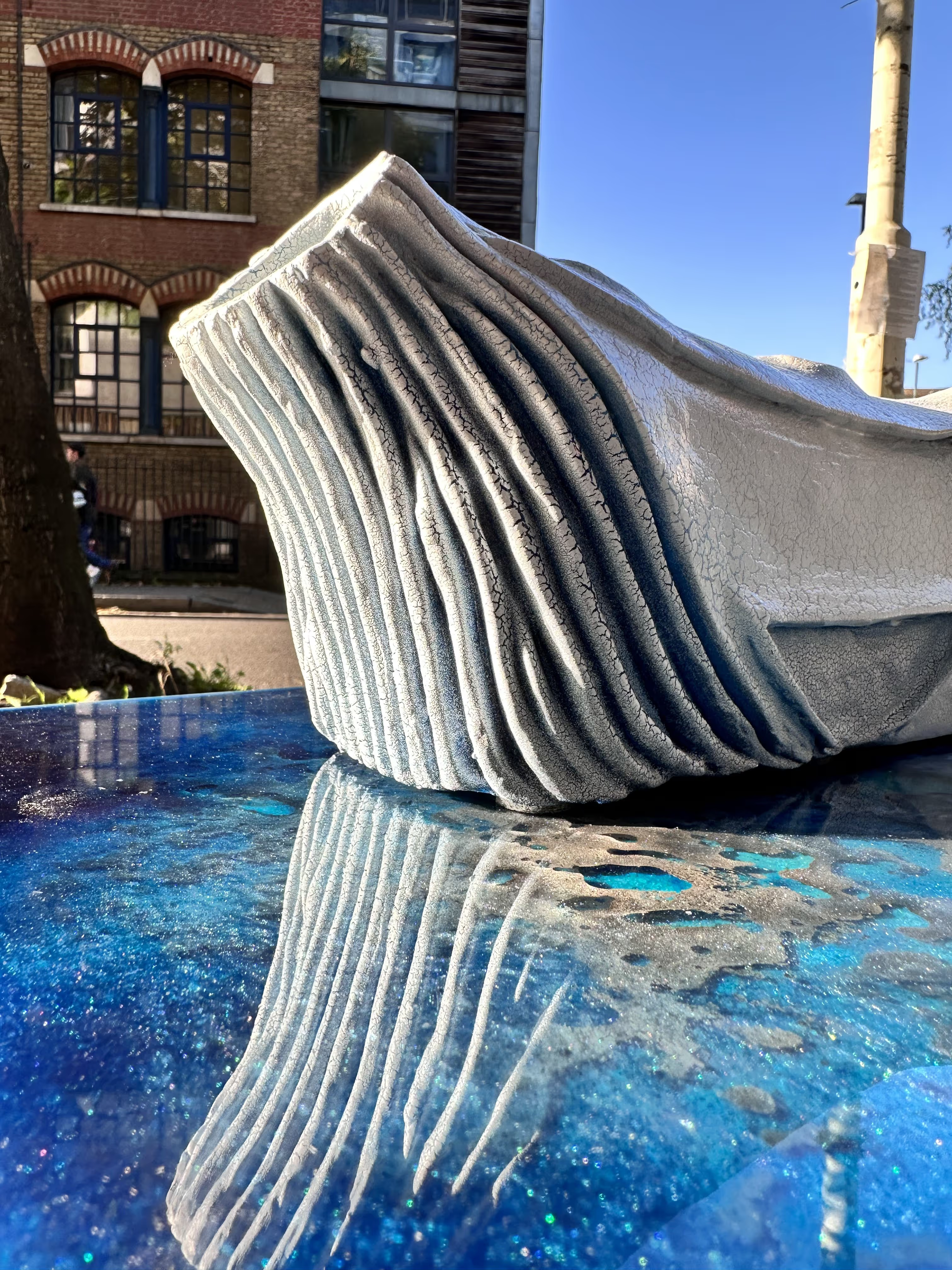
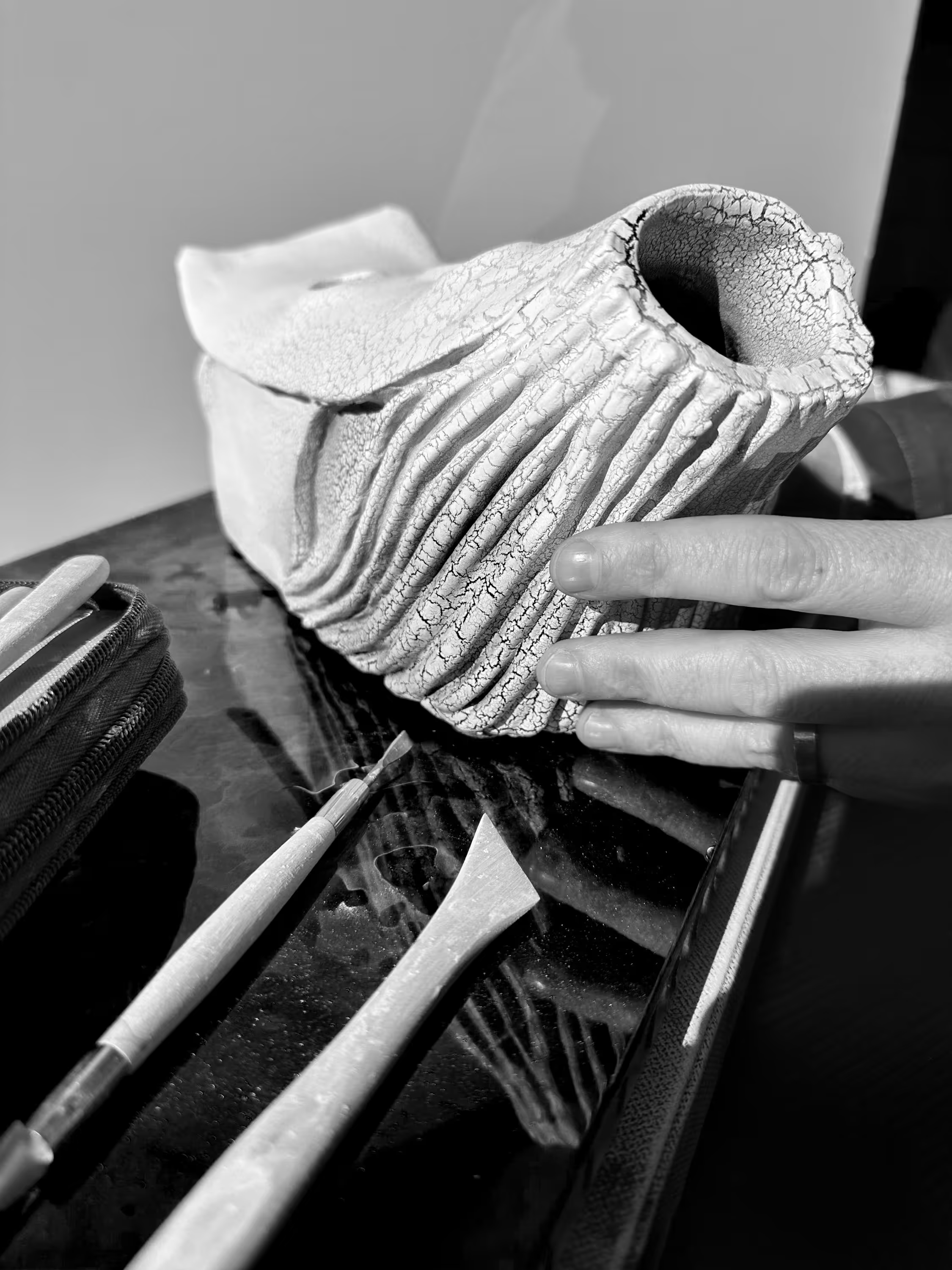

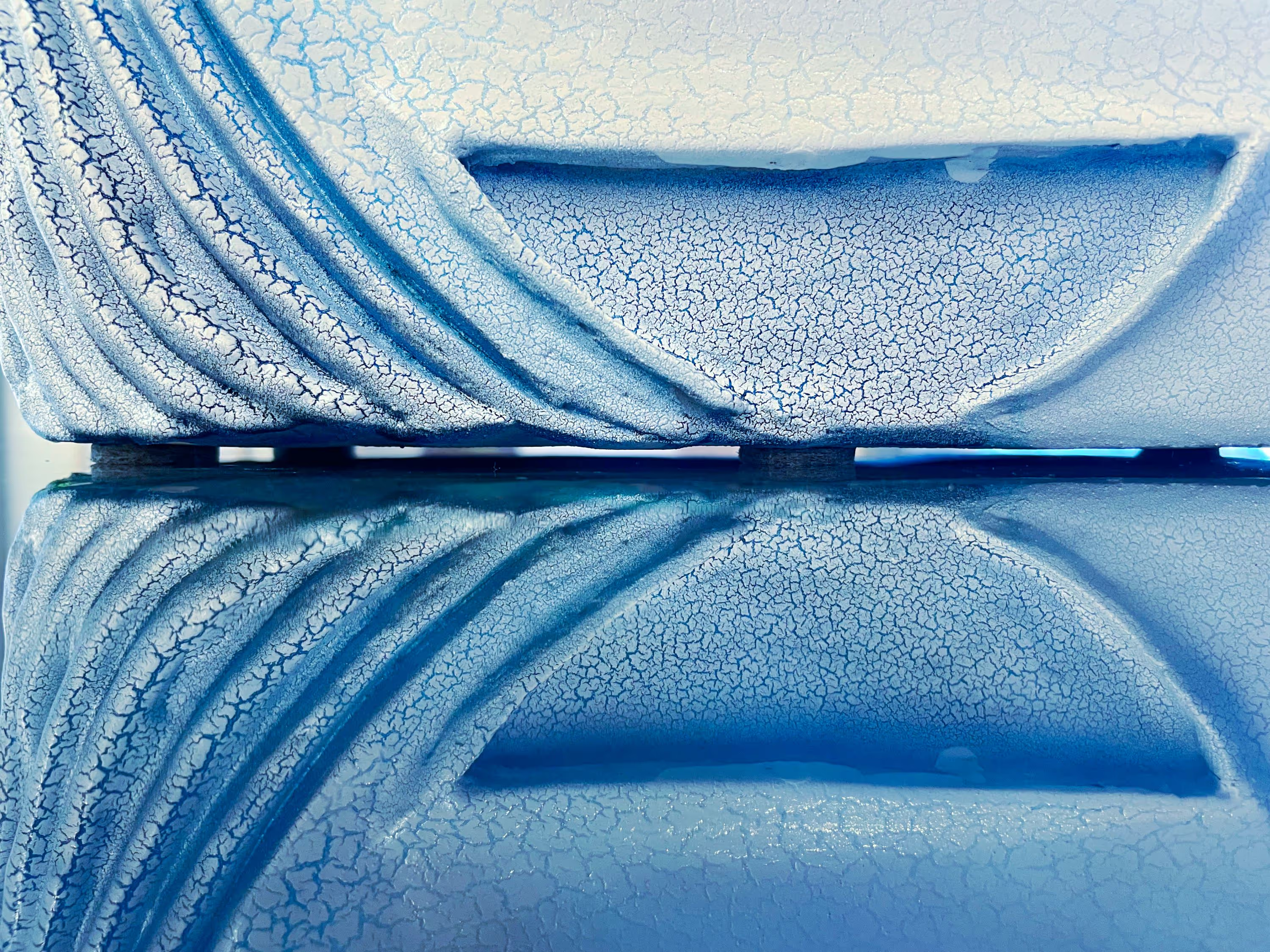
The design of Cetacean was shaped through an intensive and collaborative process involving stakeholder engagement, community consultation and local environmental input.
BACA architects’ founder, Richard Coutts, began the concept as a hand-sculpted clay model, capturing the grace and movement of the ocean in physical form.
The exterior is finished with a delicate Japanese crackle-glazed porcelain surface, evoking the patterns of water, the timeless texture of marine life, and the weathered nature of a whale's skin.
Inspired by the whale behaviour known as a “spy hop,” where a whale rises above the surface to observe its surroundings, the form symbolises curiosity and coexistence between humans and nature.
Of the three proposed designs, The Cetacean was chosen by the Busselton community for its emotional resonance and poetic connection to the sea.
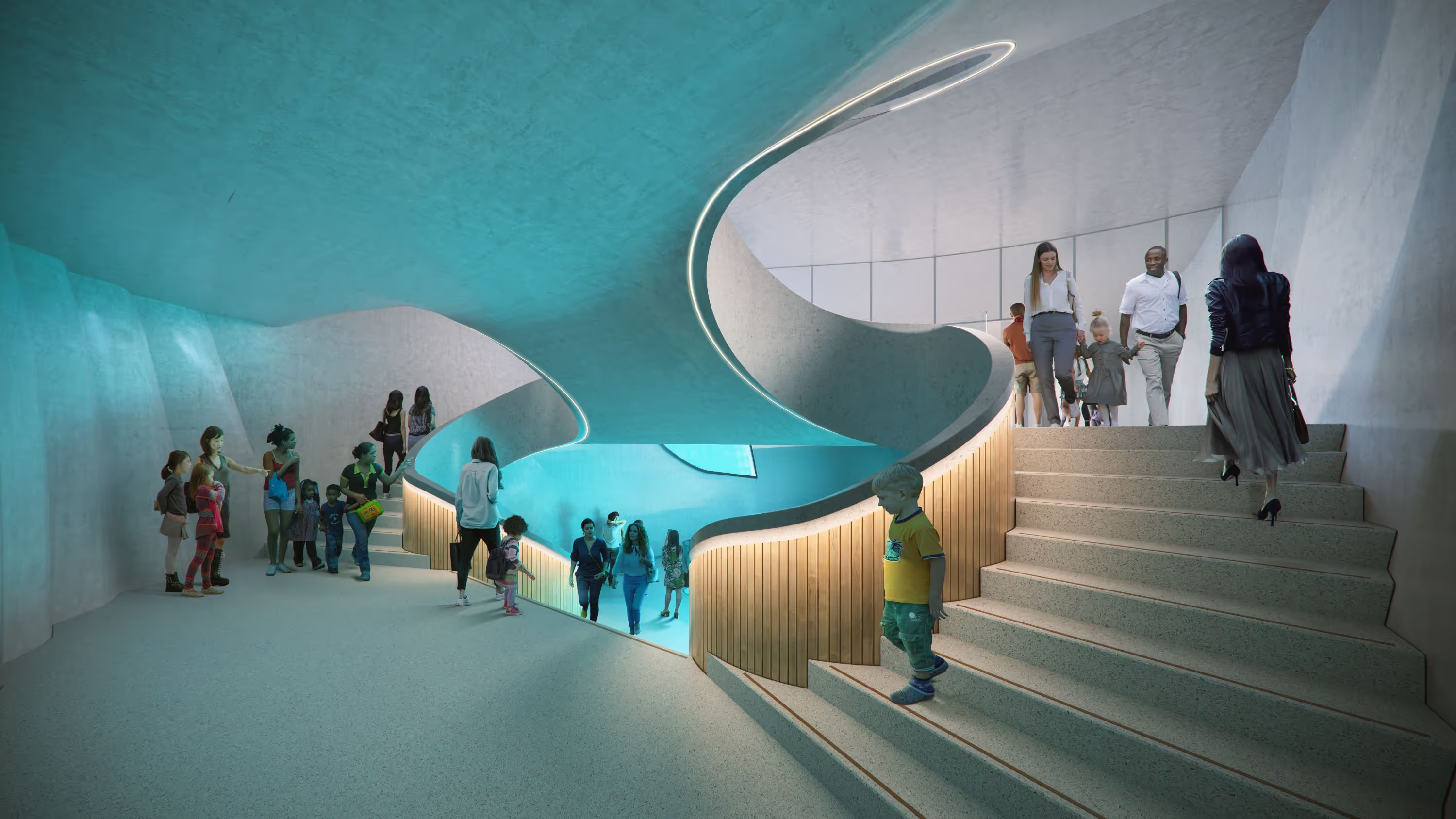
Emerging elegantly from the Busselton Jetty, the AUDC guides visitors through a gradual descent from land to ocean. Inside, a sculptural stairway leads to a submerged observation chamber where curved walls and panoramic windows reveal the underwater landscape of Geographe Bay.
Beyond this lies an underwater dining venue, creating an experience that unites architecture and marine life in a seamless encounter.
Constructed using sustainable materials and flood-resilient engineering, the AUDC represents a pioneering model of environmental and water architecture.
It is a building that not only studies the ocean but becomes part of it, embodying our philosophy of designing with, rather than against, the natural world.
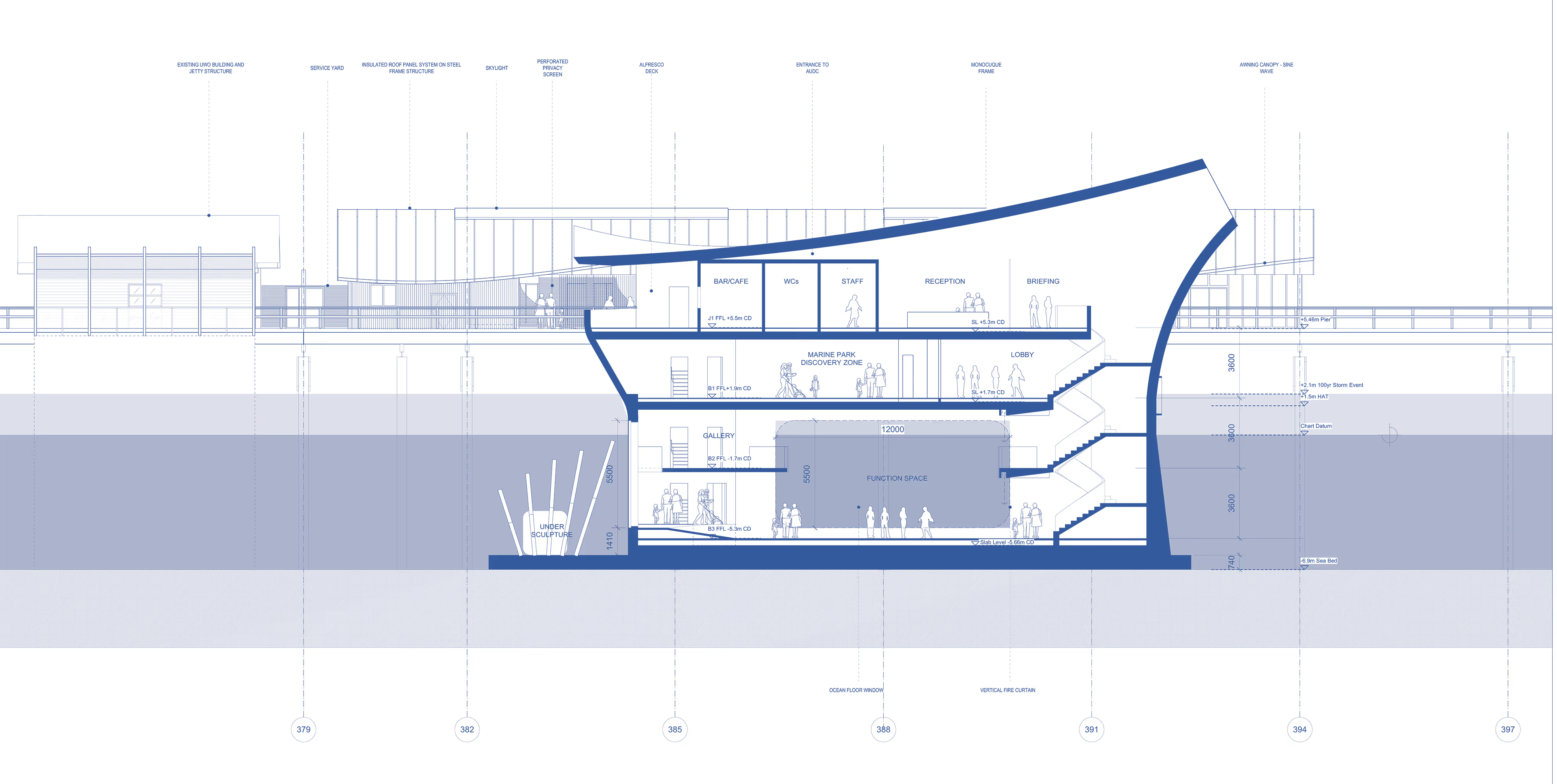
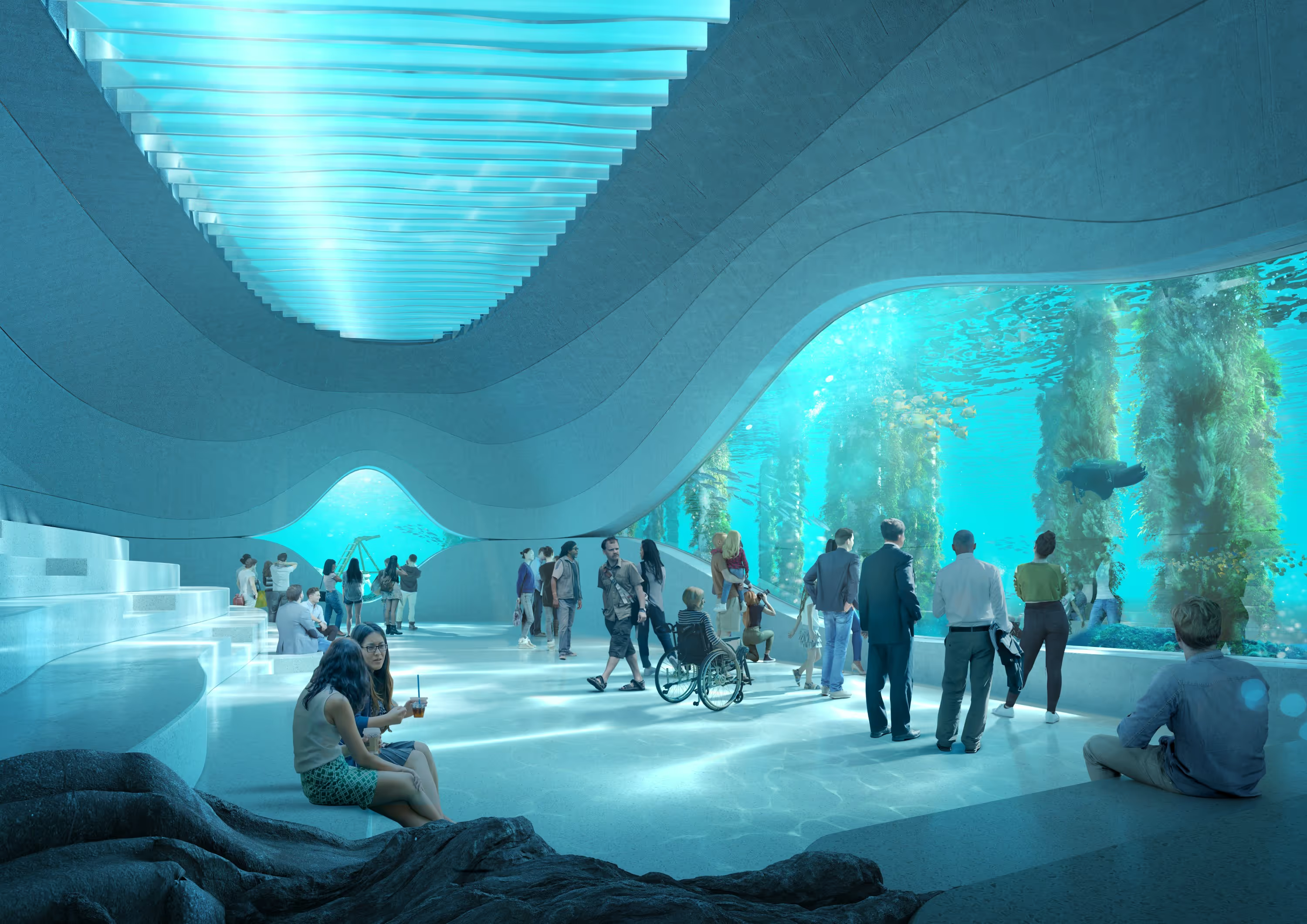
.avif)
